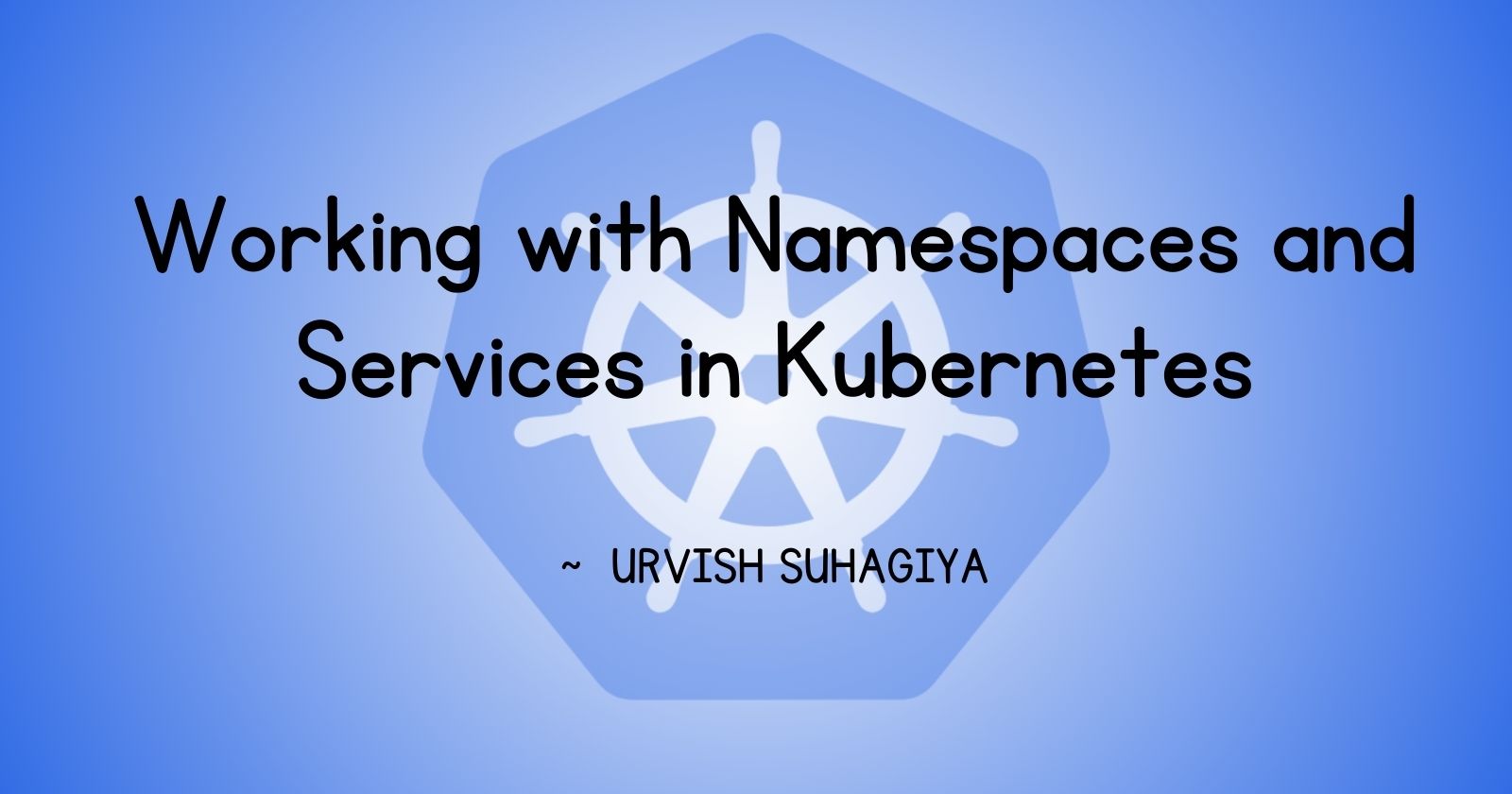Working with Namespaces and Services in Kubernetes
 Urvish Suhagiya
Urvish Suhagiya
Introduction
In Kubernetes, Namespaces and Services play crucial roles in managing and exposing resources. Namespaces allow you to create isolated environments within a single cluster, while Services enable you to expose your Pods and Deployments to the network, providing ways to manage load balancing and networking.
This article will guide you through creating a Namespace, updating your deployment to use this Namespace, and understanding the basics of Services in Kubernetes.
Task 1: Creating and Using a Namespace
Step 1: Create a Namespace
To create a Namespace, use the following command:
kubectl create namespace <namespace-name>
Replace <namespace-name> with your desired Namespace name. For example, if you want to create a Namespace called my-namespace, the command would be:
kubectl create namespace my-namespace
Step 2: Update the Deployment File
Update your deployment.yml file to include the newly created Namespace. Add the namespace field at the top of your YAML file:
apiVersion: apps/v1
kind: Deployment
metadata:
name: my-deployment
namespace: my-namespace # Add this line
spec:
replicas: 3
selector:
matchLabels:
app: my-app
template:
metadata:
labels:
app: my-app
spec:
containers:
- name: my-container
image: my-image
ports:
- containerPort: 80
Step 3: Apply the Updated Deployment
Use the following command to apply the updated deployment configuration:
kubectl apply -f deployment.yml -n <namespace-name>
Replace <namespace-name> with your actual Namespace name, such as:
kubectl apply -f deployment.yml -n my-namespace
Step 4: Verify the Namespace Creation
To check the status of your Namespaces, use the command:
kubectl get namespaces
You should see your newly created Namespace listed among the existing ones.
Task 2: Understanding Services, Load Balancing, and Networking
Services in Kubernetes
A Service in Kubernetes is an abstraction that defines a logical set of Pods and a policy to access them. Services provide a stable endpoint (IP address) and enable Pods to be accessed consistently, even if the underlying Pods are constantly changing.
There are different types of Services in Kubernetes:
ClusterIP (default): Exposes the Service on an internal IP in the cluster. This type of Service is only accessible within the cluster.
NodePort: Exposes the Service on the same port of each selected Node in the cluster.
LoadBalancer: Creates an external load balancer in the cloud and assigns a fixed, external IP to the Service.
ExternalName: Maps a Service to a DNS name, not to a typical selector.
Creating a Service
To create a Service, you need to define it in a YAML file, similar to a Deployment. Here’s an example of a simple ClusterIP Service:
apiVersion: v1
kind: Service
metadata:
name: my-service
namespace: my-namespace
spec:
selector:
app: my-app
ports:
- protocol: TCP
port: 80
targetPort: 80
Apply the Service using:
kubectl apply -f service.yml -n my-namespace
Load Balancing and Networking
Load balancing is an essential part of managing traffic to your application. Kubernetes handles load balancing through Services by distributing network traffic among the Pods that match the Service's selector.
Refer to the official Kubernetes documentation for more detailed information on Services and Networking.
Conclusion
In this task, you have learned how to create and manage Namespaces, update your deployments to use a specific Namespace, and understand the basics of Services in Kubernetes. These steps are fundamental for organizing resources in a cluster and exposing applications to the network efficiently.
Keep exploring Kubernetes, and Happy Learning! 🚀
Subscribe to my newsletter
Read articles from Urvish Suhagiya directly inside your inbox. Subscribe to the newsletter, and don't miss out.
Written by

Urvish Suhagiya
Urvish Suhagiya
Exploring the world of DevOps 🌐.